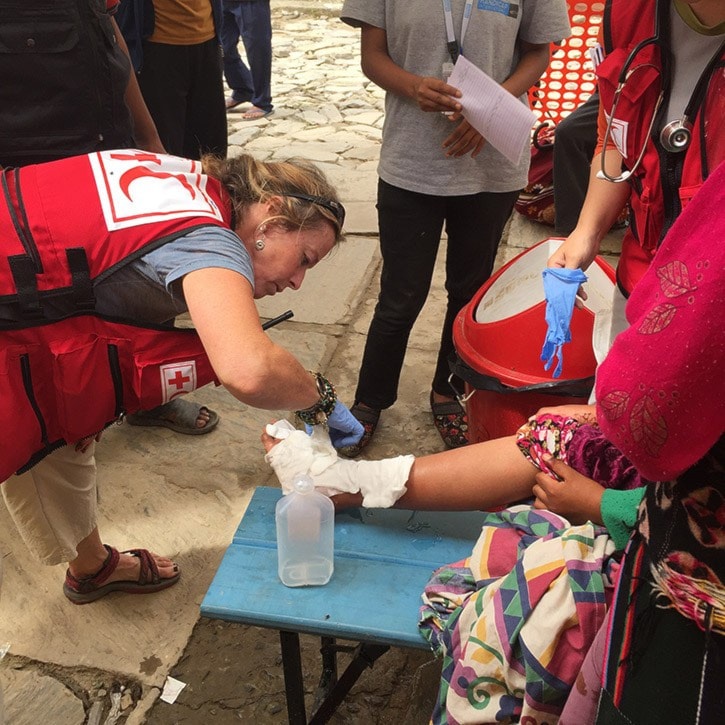While working with the Canadian Red Cross in an area devastated by April’s 7.8 magnitude earthquake in Nepal, Chilcotin nurse practitioner Patrice Gordon was struck by the genuine compassion of people living in the region.
“In spite of the hardships they are still so happy, warm, welcoming and interested in other people,” Gordon told the Tribune. “They are not absorbed with what’s befallen them.”
When she compared the lives of people in Nepal to those of people living in North America it was humbling, she added.
“We complain because our price of gas goes up or whatever, or worry over things that are really trivial in the big picture. There’s a lesson for all of us in this for sure.”
Gordon was the leader of a 21-person team stationed at a field hospital in Dhunché from July 3 to 29.
Made up of four doctors, five nurses, two paramedics and technicians, team members came from Colombia, Mexico, Japan, Australia and Canada.
Patient care kept them busy, but primarily the CRC was there to offer support to local doctors and nurses so the field hospital could continue to function after CRC left.
As monsoon season was in full swing, patients were arriving with venomous snake bites so the team formulated a snake bite protocol and kit.
Team members also did assessments of the nine separate tent cities located on the tiered mountainside where residents from surrounding displaced communities had come to live temporarily after the quake.
“They set up tarps or whatever they could find to put up over their heads,” Gordon said of the tent city.
Part of the assessment was to determine how much help people had received, where they were getting water from, what their latrine situations were, and finding out how many children and pregnant women there were.
Around 2,300 people normally live in Dhunché and another 700 were living in the camps.
“We found problems with water sources and problems with inaccessibility to latrines,” Gordon said, noting they ended up liaising with other organizations that were in the area doing water sanitization and hygiene work to help them find the people who were in need.
Their hospital was erected inside the one building that remained standing after the earthquake and the rest of the emergency response unit was in tents.
One of the greatest challenges was transporting patients six hours along the road to Kathmandu.
The road is carved on the side hills of mountains and because of the earthquake, followed by monsoon season, continuous landslides were hampering road stability.
Every day Gordon would hear the sound of landslides, she said.
“We would take photographs and compare the next day to see where the new scars were.”
The rain made the road muddy and slippery and there was no room to slide off, she said, adding for the first time in her life she was afraid of road conditions.
“You were squeezed against the rock face and at one point we said if it was raining on our way back we’d get out and walk.”
Eventually the hospital was only allowed to use the road for essential medical travel.
When a young pregnant mother arrived who was having seizures, a helicopter was called in to transport her to a larger centre.
Gordon asked the pilot if the pregnant girl’s mother could go along and when he said yes she ran over and grabbed the mom’s hand.
As the two women ran toward the helicopter, the mom stopped Gordon, turned her around and greeted her in the namaste fashion with her hands held together.
“She was balling and I was too,” Gordon said. “I did the namaste gesture back to her. It was this beautiful moment where everything stopped from the busyness of dealing with a crisis and pulled everyone into the humanness of lives being touched by what we were doing.”
The baby was delivered, but the young mother died, and two days later the baby died as well.
“We didn’t save them, but that mom knows that everything possible was done for her daughter and grandson.”
Gordon said she feels incredibly fortunate to be able to go and work in areas like Nepal and Sierra Leone.
“It might be painful and stressful but it gives so much richness and colour to life to be able to pass through those types of experiences and the lives of people,” she said. “To know you and your colleagues have touched lives so deeply is an incredible privilege. I am lucky.”
